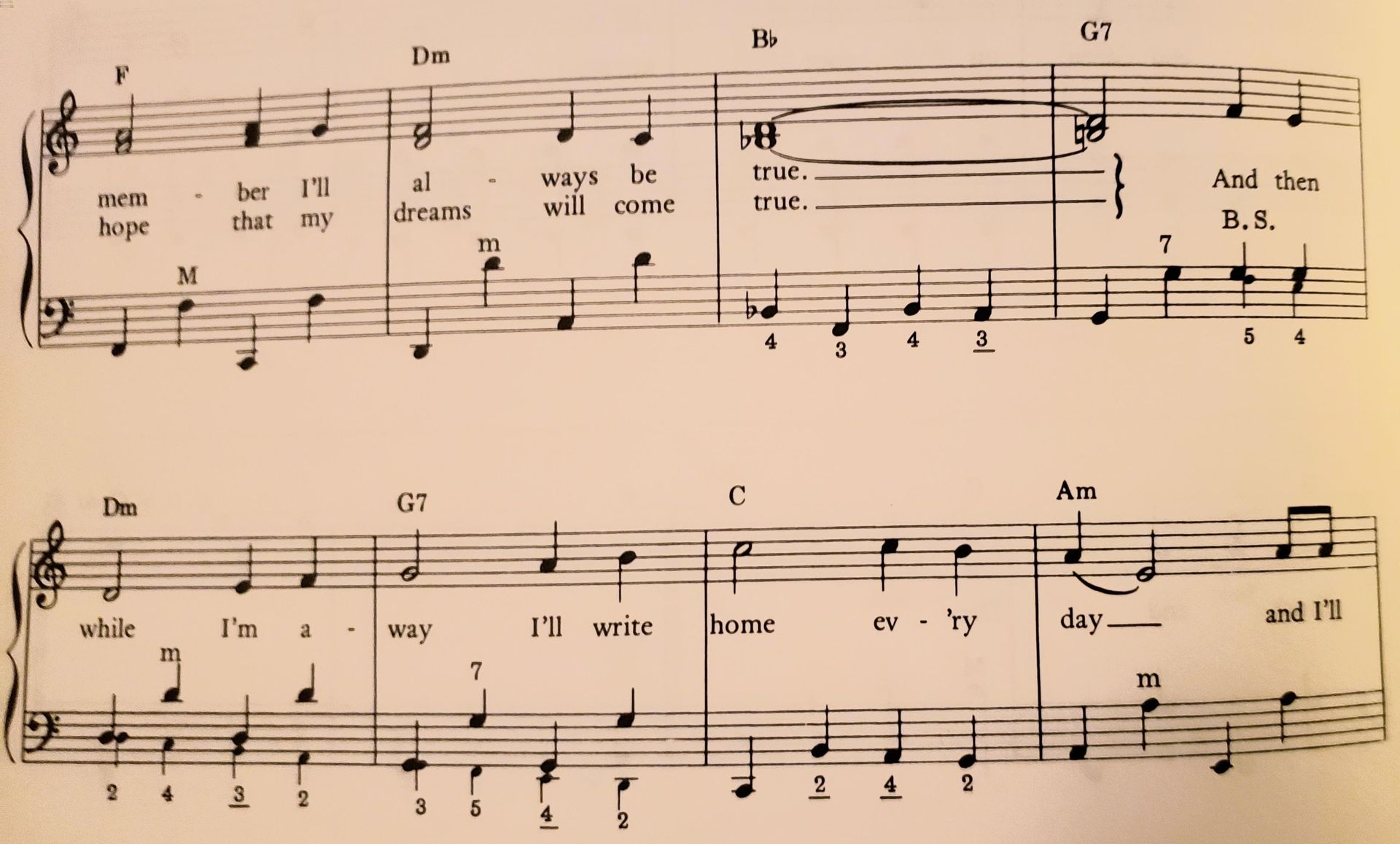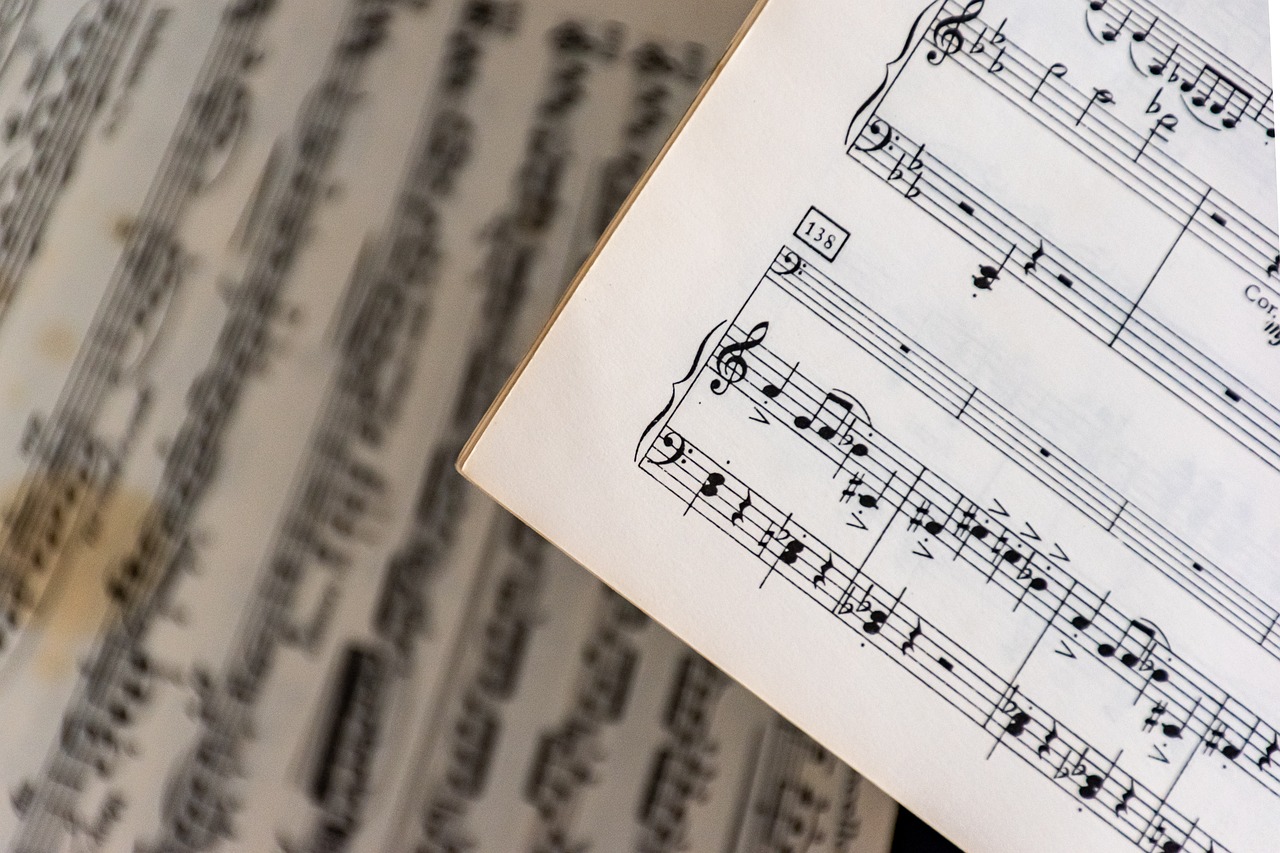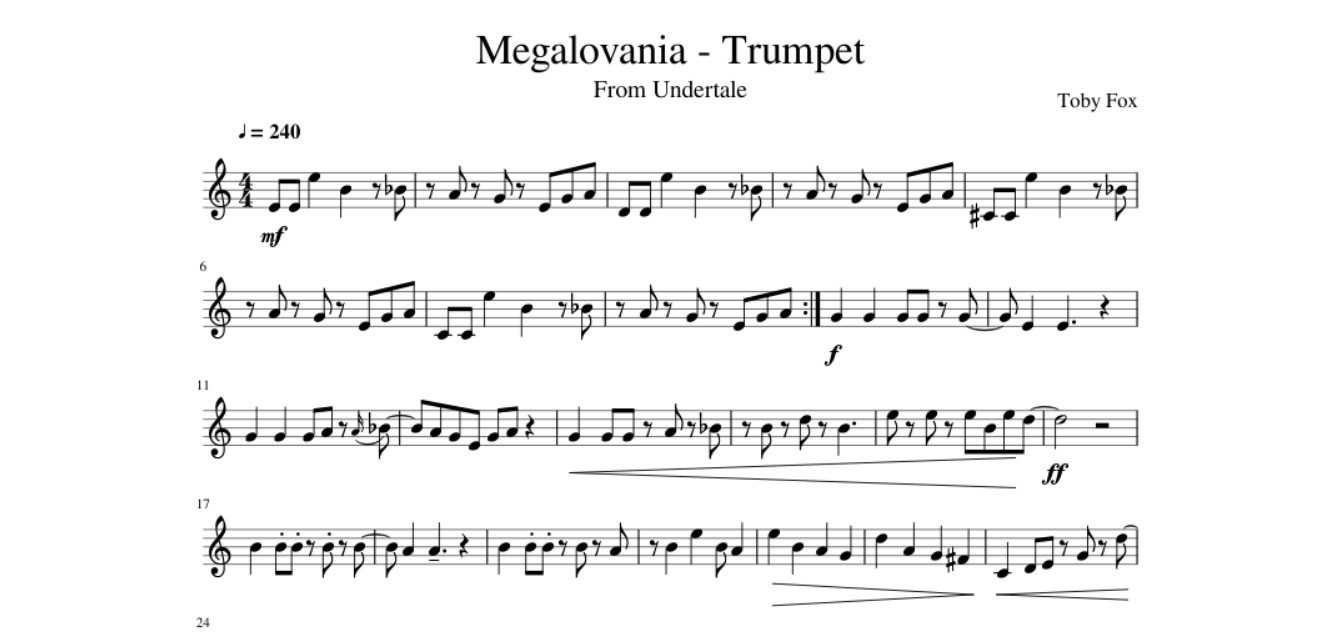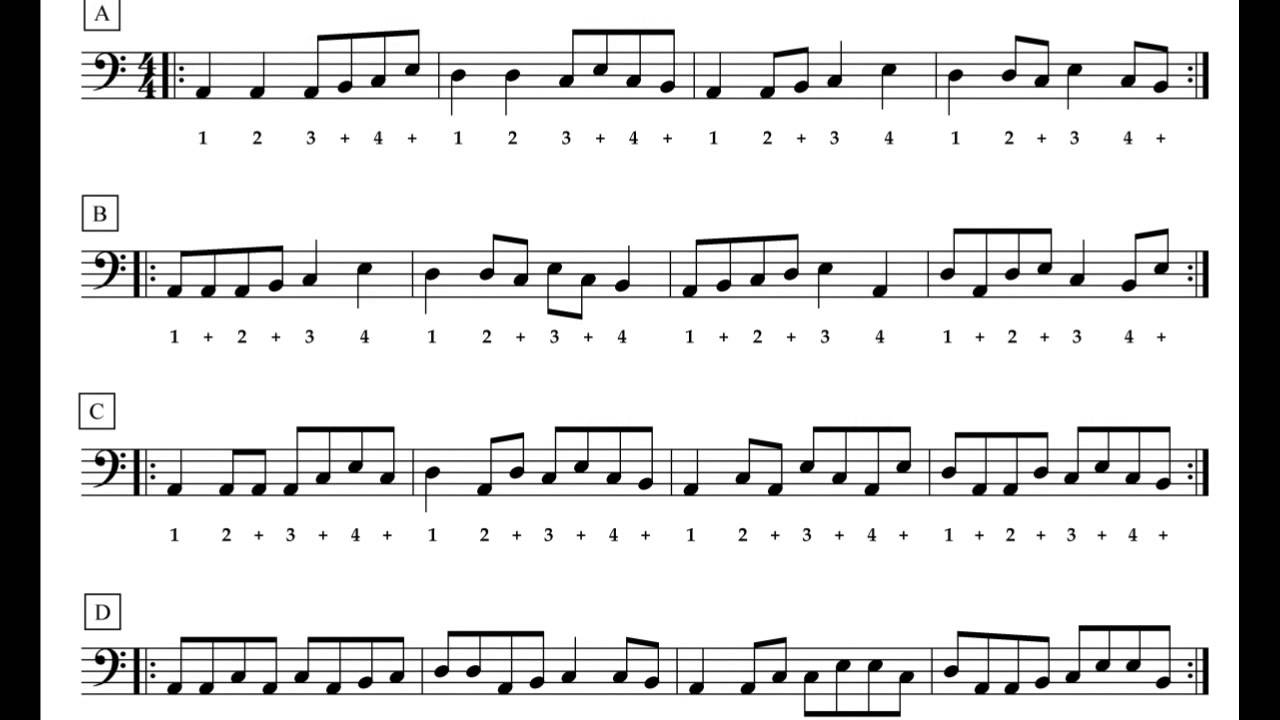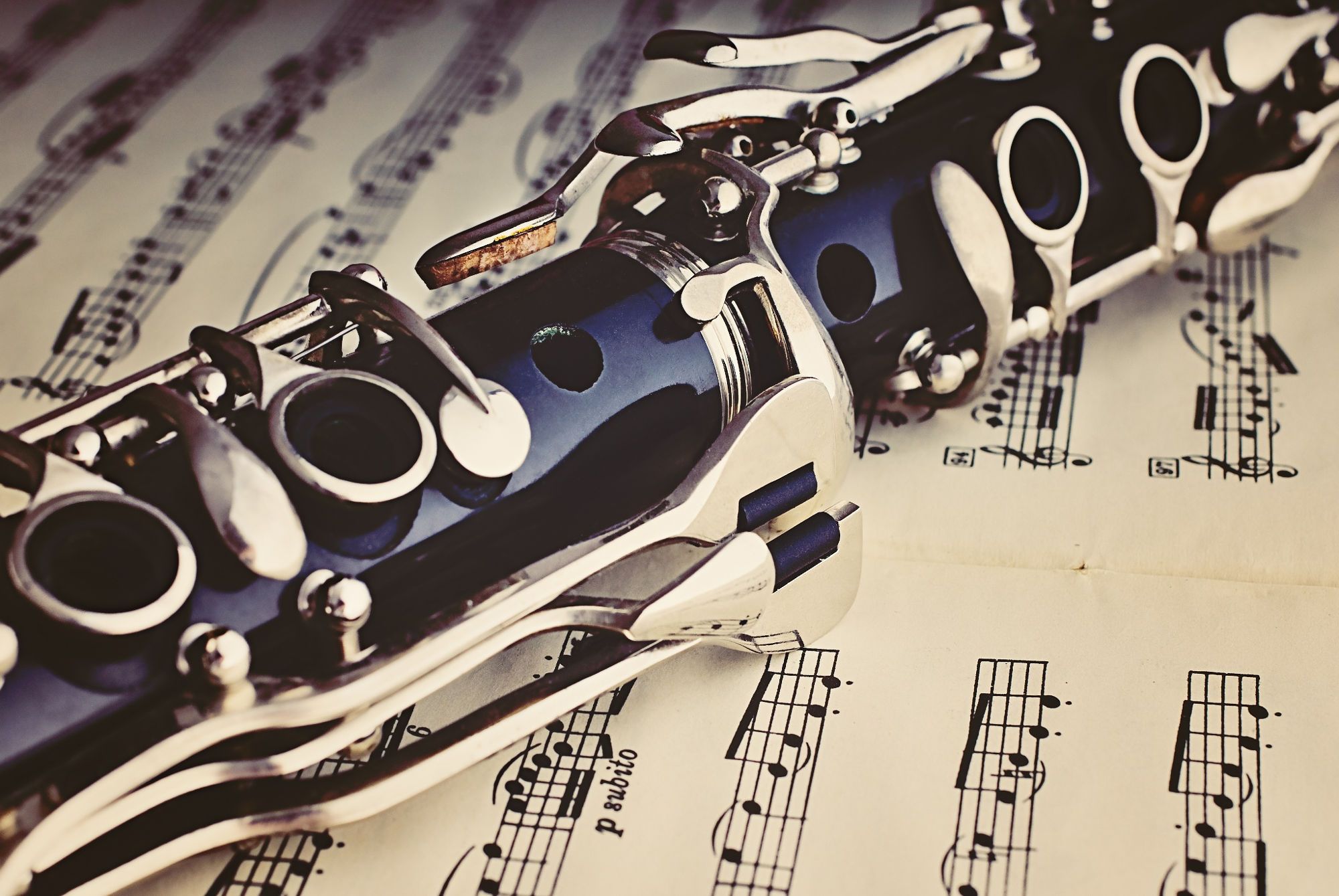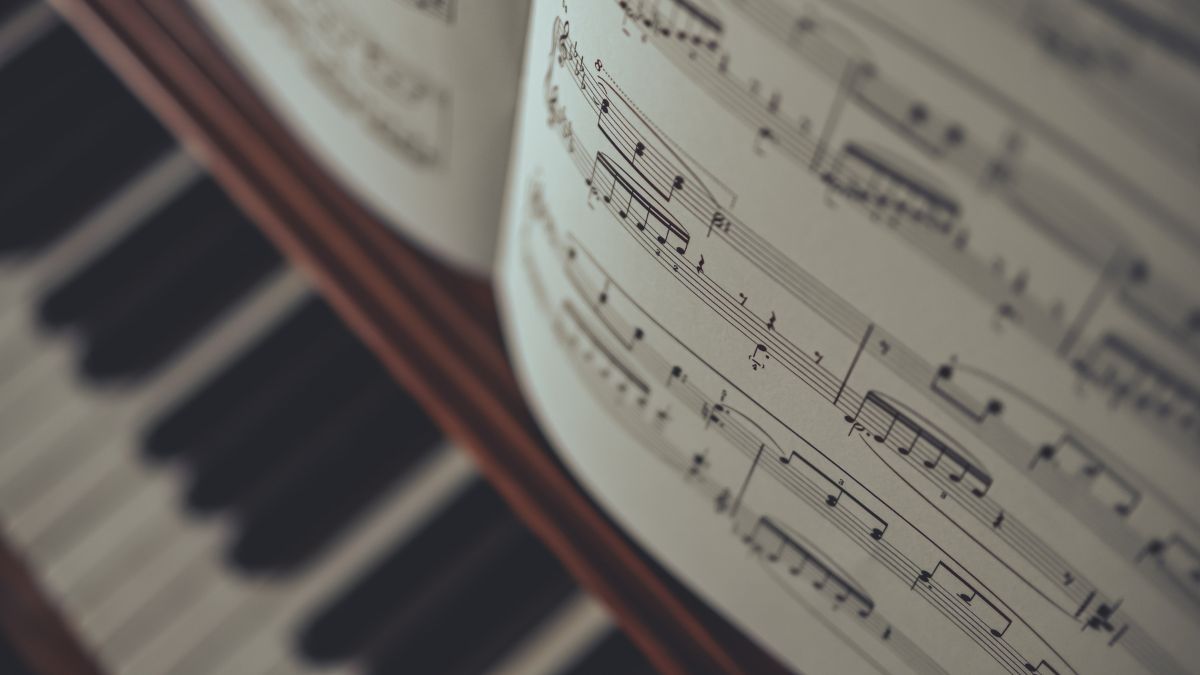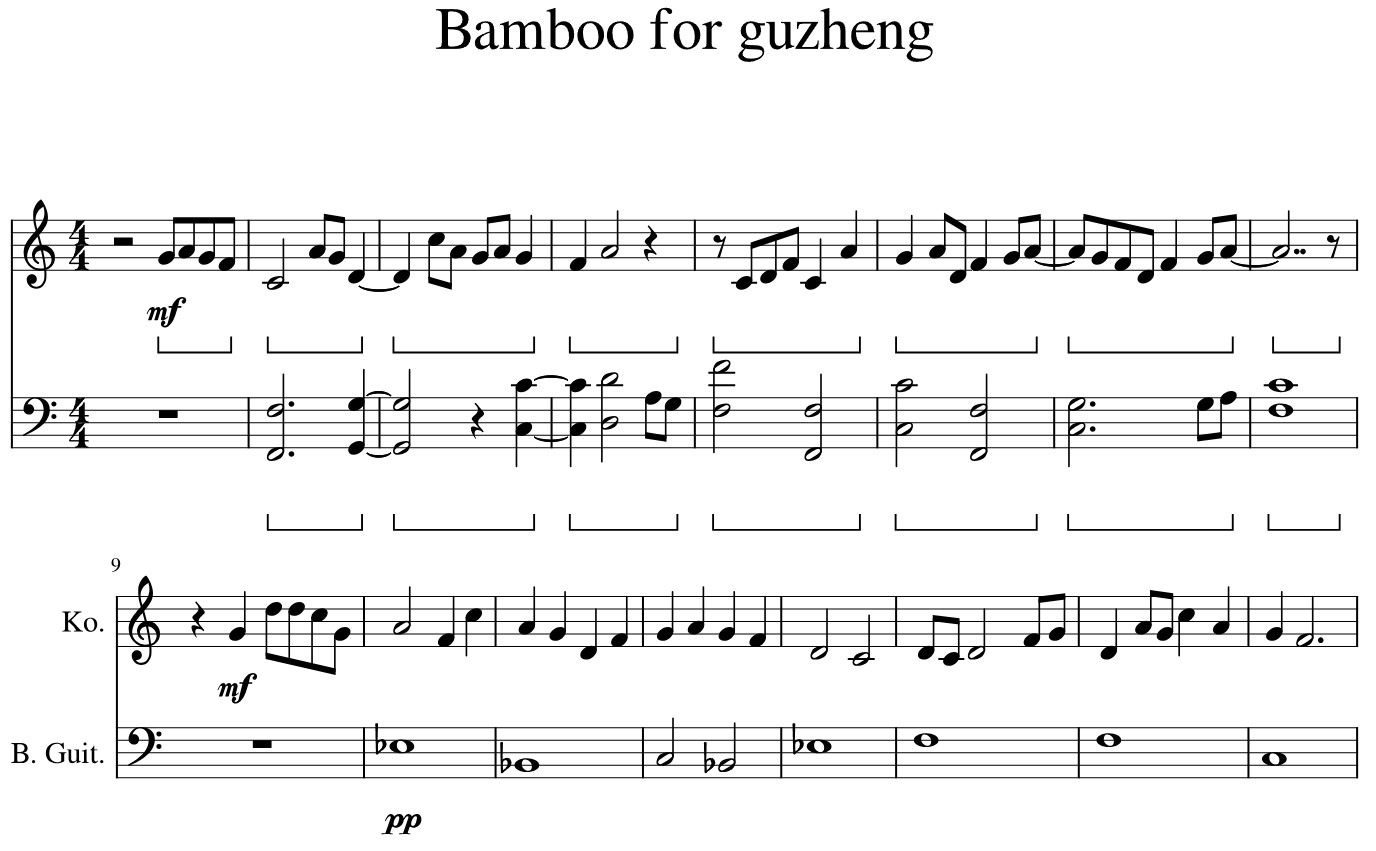Home>Production & Technology>Sheet Music>How To Read Singing Sheet Music
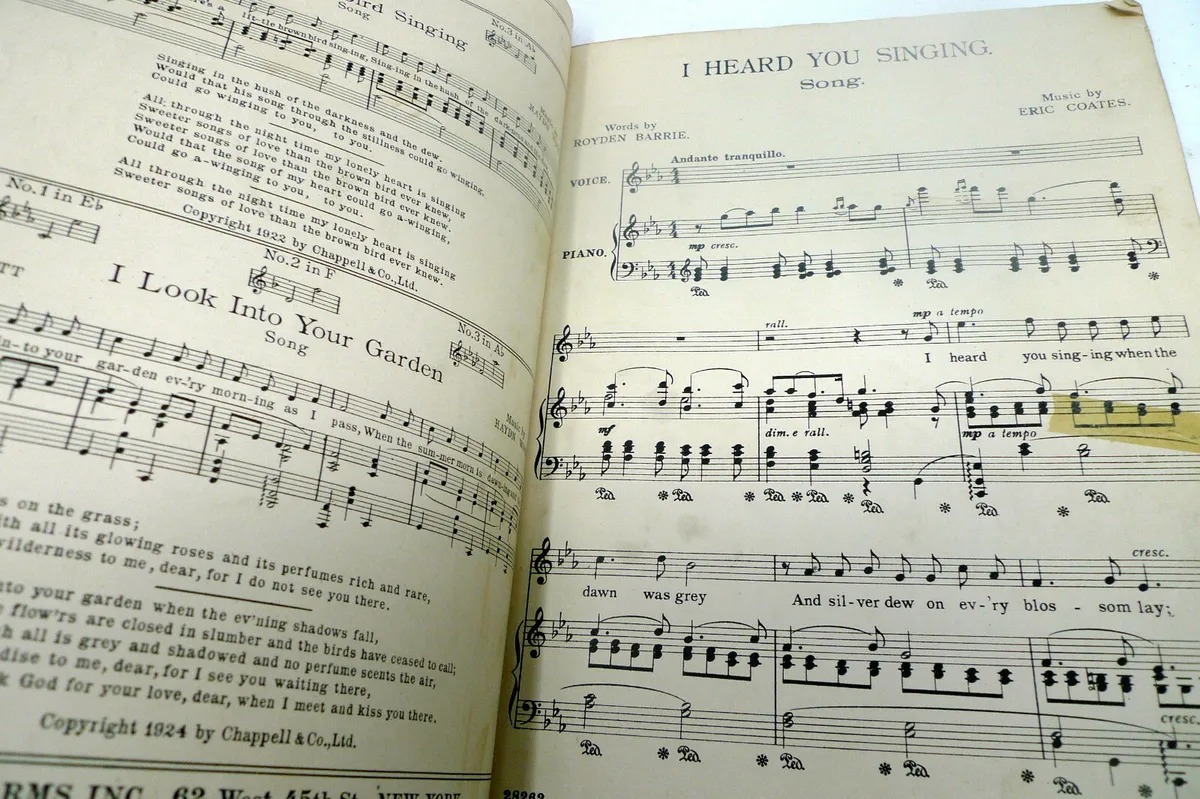

Sheet Music
How To Read Singing Sheet Music
Modified: February 23, 2024
Learn how to read singing sheet music with this comprehensive guide. Understand the symbols, notes, and rhythms in sheet music to enhance your singing skills.
(Many of the links in this article redirect to a specific reviewed product. Your purchase of these products through affiliate links helps to generate commission for AudioLover.com, at no extra cost. Learn more)
Table of Contents
Introduction
Welcome to the world of sheet music! If you’re new to singing or just starting to explore the realm of music notation, you may find the sheet music daunting at first. However, with a little guidance and practice, reading sheet music can become a valuable skill that enhances your musical journey.
Sheet music is a written representation of musical notes, rhythms, and other musical elements that guide musicians in playing or singing a piece of music. It provides a roadmap that helps performers interpret and reproduce the composer’s intentions. By learning to read sheet music, you can unlock a treasure trove of songs, from classical pieces to modern tunes, and confidently share your singing talents with others.
In this article, we will guide you through the fundamental aspects of reading singing sheet music. We’ll cover topics such as understanding the musical staff, recognizing and interpreting notes, navigating time and key signatures, identifying musical symbols and markings, reading vocal notation and lyrics, and even honing your sight-reading skills. By the end of this article, you’ll have a solid foundation in sheet music reading, empowering you to explore a wide range of vocal repertoire and deepen your musical skills.
Whether you’re an aspiring vocalist, a choir member, or just someone who enjoys singing in the shower, understanding sheet music will open up a whole new world of musical expression. So let’s dive in together and embark on a journey through the incredible world of sheet music!
Understanding the Basics of Sheet Music
Before we delve into the specifics of reading singing sheet music, it’s essential to grasp some of the basic elements that make up a piece of sheet music. By familiarizing yourself with these fundamental components, you’ll be able to navigate through sheet music more effortlessly.
The first thing you’ll encounter in sheet music is the musical staff. The staff consists of five horizontal lines and four spaces, which collectively represent the pitch of the notes. The lines and spaces are assigned specific letter names (A, B, C, D, E, F, and G), starting from the bottom of the staff. Notes are placed on the lines and spaces to indicate their pitch.
Each note on the staff has a corresponding symbol. The most common note symbol is the oval-shaped notehead, which determines the duration of the note. Notes can be whole notes, half notes, quarter notes, eighth notes, and so on, each representing a different length of time. Additionally, notes can have stems that point either up or down, depending on their position on the staff.
To help give context to the notes, there are two types of vertical lines on the staff: bar lines and double bar lines. Bar lines divide the music into measures or bars, which contain a specific number of beats based on the time signature. Double bar lines indicate the end of a section or the entire piece.
Another crucial component of sheet music is the time signature. The time signature consists of two numbers written at the beginning of the staff. The top number indicates the number of beats per measure, while the bottom number represents the note value that receives one beat. Understanding time signatures is essential for maintaining the correct rhythm and tempo while singing.
Key signatures are also important in sheet music. They are written at the beginning of each staff and indicate the key or tonality of the piece. Key signatures can consist of sharps (#) or flats (b), which alter the pitch of certain notes throughout the piece.
As you explore sheet music, you’ll encounter various musical symbols and markings. Dynamics markings, such as pianissimo (pp) and fortissimo (ff), indicate the volume or intensity of the music. Articulation markings, such as staccato or legato, depict how the notes should be played or sung. Other symbols, like accents and fermatas, provide additional instructions for expressiveness and phrasing.
Lastly, vocal notation in sheet music includes lyrics and syllabic indications. Lyrics are written below the staff and correspond to specific pitches. Syllabic indications show how many syllables are associated with each note. By incorporating vocal notation, sheet music provides singers with the structure and guidance needed to articulate words and deliver the intended meaning of the song.
Understanding these basic elements of sheet music lays the foundation for reading and interpreting singing sheet music. As we continue, we’ll explore each of these components in more depth, equipping you with the skills to confidently approach any piece of vocal sheet music.
Learning the Musical Staff
The musical staff is the foundation of sheet music and serves as a visual representation of pitch. Understanding the structure and layout of the staff is key to reading and interpreting musical notes accurately.
The staff consists of five horizontal lines and four spaces, each of which represents a specific note pitch. The lines and spaces are assigned letter names, starting from the bottom. The lines, from bottom to top, correspond to the notes E, G, B, D, and F using the acronym Every Good Boy Deserves Fudge. The spaces between the lines represent the notes F, A, C, and E, spelling the word FACE.
As notes are placed on the staff, their position determines their pitch. A note on a higher line or space indicates a higher pitch, while a note on a lower line or space represents a lower pitch. By associating the letter names of the notes on the staff, you can quickly identify and sing the corresponding pitches.
In sheet music, additional lines can be added above or below the staff when necessary to accommodate higher or lower notes. These lines are called ledger lines and extend the range of pitches that can be represented on the staff.
It’s important to note that the musical staff can have many different clefs. The most common clef for vocal sheet music is the treble clef, also known as the G clef. The treble clef signifies that the second line from the bottom of the staff represents the note G. This clef is used for higher-pitched instruments and voices.
However, depending on the vocal range of the song, you may encounter other clefs such as the bass clef or the alto clef. The bass clef, also known as the F clef, positions the fourth line from the bottom as the note F. It is commonly used for lower-pitched instruments and voices. The alto clef, on the other hand, is often used for medium range voices.
As you familiarize yourself with different clefs, you’ll become more comfortable reading and singing sheet music in various vocal ranges. It’s worth spending time practicing identifying notes on the staff in different clefs to develop a solid foundation in reading sheet music for singing.
By understanding the musical staff and the clefs commonly used in vocal sheet music, you’ll be equipped to confidently navigate through the pitch elements of a piece. Let’s now move on to recognizing and interpreting the notes themselves as we continue on our journey of reading singing sheet music.
Recognizing and Interpreting Notes
When reading sheet music, notes are represented by symbols placed on the musical staff. Understanding how notes are written and their relationship to the staff is crucial for accurately interpreting and singing a piece of music.
The most common symbol used to represent a note is the oval-shaped notehead. The placement of the notehead on the staff corresponds to its pitch. For example, a note placed on the second line from the bottom represents the note B in the treble clef.
Another important aspect of notes is their duration or length. Notes can be classified as whole notes, half notes, quarter notes, eighth notes, and so on. A whole note lasts for four beats, while a half note is held for two beats. Quarter notes are held for one beat, and eighth notes have half the duration of a quarter note, representing half a beat.
Notes can also have stems that extend either up or down from the notehead. The direction of the stem does not affect the pitch; it simply depends on the position of the note on the staff. Typically, notes positioned below the third line have stems that extend upward, while notes positioned above the third line have stems that extend downward.
In addition to stems, notes can also have flags or beams attached to them. Flags or beams connect multiple notes together to form groups. These groups, called note values or rhythms, indicate the timing and division of beats within a measure. Understanding note values and their relationships is crucial for maintaining the correct rhythm while singing.
Rests are another important element to consider when reading sheet music. Rests indicate a moment of silence or pause in the music. Rests share the same duration values as notes, with whole rests being equal to four beats, half rests equivalent to two beats, quarter rests representing one beat, and so on. Rests provide valuable information about when to pause and when to sing during a musical piece.
To help differentiate between pitches, various lines and spaces on the staff can be modified with additional symbols known as accidentals. Accidentals include sharps (#) and flats (b), which raise or lower the pitch of a note by a half step. These symbols are written in front of the notehead and alter the pitch of the note for the entire measure unless canceled by a subsequent accidental or a natural sign.
By familiarizing yourself with the symbols and characteristics of notes and rests, you’ll be able to accurately identify and interpret the pitch and duration of each note in a piece of sheet music. This knowledge will enable you to confidently sing the right notes at the right time, bringing the music to life through your voice.
Navigating Time Signatures
Time signatures serve as an essential component of sheet music, providing information about the rhythmic structure and timing of a musical piece. Understanding time signatures is crucial for maintaining the correct tempo and rhythm while singing.
A time signature consists of two numbers written at the beginning of the musical staff. The top number represents the number of beats per measure, while the bottom number indicates the note value that receives one beat. For example, in a 4/4 time signature, there are four beats per measure, and the quarter note receives one beat.
One of the most common time signatures in music is 4/4, also known as common time. In 4/4 time, there are four beats per measure, and the quarter note receives one beat. This time signature provides a steady and regular underlying rhythm that is often associated with many popular songs.
Another frequently encountered time signature is 3/4, known as waltz time. In 3/4 time, there are three beats per measure, and the quarter note still receives one beat. This time signature creates a waltz-like rhythm, common in classical compositions and ballads.
Other time signatures include 2/4, which has two beats per measure and is often associated with marches, and 6/8, which has six beats per measure and is commonly found in folk and upbeat songs. There are many other variations and combinations of time signatures, each with its own unique rhythmic feel and character.
When reading sheet music, the time signature provides a framework for organizing and understanding the rhythm of the piece. It helps singers anticipate the timing of the beats and the placement of notes and rests within each measure.
It’s important to note that the time signature can change throughout a piece of music. This change is denoted by a new time signature indicated at the point of transition. Paying attention to these changes is essential to ensure a seamless and accurate performance.
By understanding time signatures and their significance, you’ll be able to navigate the rhythmic structure of a musical piece more effectively. This knowledge will help you maintain a steady tempo and ensure proper coordination with other musicians or accompaniments while singing.
Understanding Key Signatures
Key signatures play a crucial role in sheet music, providing information about the tonality of a piece and indicating specific sharps or flats that consistently occur throughout the music. Understanding key signatures is essential for accurate interpretation and singing.
A key signature is typically located at the beginning of a musical staff, right after the clef symbol. It consists of sharps (#) or flats (b) placed on specific lines or spaces of the staff. These symbols indicate which notes are altered from their natural state throughout the piece.
Key signatures are used to establish a tonal center or key for a piece of music. The key represents the central pitch around which the music revolves and is often denoted by a letter name, such as C major or G minor. The key signature determines which notes are played or sung as sharps or flats, establishing the unique tonality of the composition.
When a key signature contains sharps, they are positioned on certain lines or spaces of the staff. The sharps indicate that the corresponding notes should be played or sung a half step higher. For example, in the key of G major, the key signature includes a sharp symbol placed on the line of the note F. This means that every time an F is encountered in the music, it should be played or sung as an F#.
Conversely, when a key signature contains flats, they are also placed on certain lines or spaces of the staff. The flats indicate that the corresponding notes should be played or sung a half step lower. For example, in the key of F major, the key signature includes a flat symbol placed on the space of the note B. This means that every time a B is encountered in the music, it should be played or sung as a Bb.
By recognizing and understanding the key signature, singers can anticipate the altered pitches that occur throughout a piece of music. This knowledge helps maintain consistent pitch accuracy and tonality as the song progresses.
It’s important to note that key signatures can change within a piece of music. These changes are indicated by a new key signature at the point of transition. Paying attention to these changes is crucial for maintaining the correct pitch and tonality while singing.
Understanding key signatures allows singers to confidently approach a wide range of musical compositions. By developing familiarity with different keys and their corresponding sharps or flats, singers can navigate through various tonalities and bring out the intended musical expression in their performance.
Identifying and Understanding Musical Symbols and Markings
Sheet music is filled with various symbols and markings that provide important instructions for interpreting and performing a piece of music. Familiarizing yourself with these symbols is key to accurately conveying the composer’s musical intentions while singing.
One common set of symbols you’ll encounter in sheet music are dynamics markings. Dynamics indicate the volume or intensity of the music at a given moment. For example, pianissimo (pp) indicates a very soft or quiet passage, while fortissimo (ff) represents a very loud or strong section. Other dynamics include piano (p) for soft, mezzo piano (mp) for moderately soft, mezzo forte (mf) for moderately loud, and crescendo (cresc.) or diminuendo (dim.) for gradually getting louder or softer, respectively.
Articulation markings are another set of symbols that provide instructions for how notes should be played or sung. They affect the attack, duration, or release of a note. For example, a staccato dot placed above or below a note indicates that it should be played or sung with a short, detached or crisp sound. Legato, on the other hand, indicates that notes should be smoothly connected without breaks or pauses between them.
Various symbols and notations are also used to indicate technique and expression. For instance, a slur is a curved line connecting two or more notes of different pitches, indicating that they should be played or sung smoothly and without separation. A trill symbol represents a rapid alternation between two adjacent notes, while a tremolo indicates a rapid repetition of a single note.
Other symbols to watch out for include accents, which emphasize a particular note by playing or singing it with a stronger attack, and fermatas, which indicate that a note or a rest should be held for a longer duration than its written value. These symbols, among others, add nuance and expressiveness to the music and help convey the intended emotional impact.
Understanding the symbols and markings in sheet music is essential for fully interpreting the composer’s intent. By paying attention to these symbols and following their instructions, singers can bring out the nuances and dynamics in a piece, elevating their performance and creating a powerful musical experience.
Reading Vocal Notation and Lyrics
In addition to standard musical notation, vocal sheet music includes specific notations and markings that help singers interpret lyrics and deliver the intended vocal expression of a song. Understanding these notations and reading lyrics effectively is crucial for capturing the essence of a piece and delivering a heartfelt performance.
The most prominent element in vocal notation is, of course, the lyrics themselves. Lyrics are typically written below the staff, aligned with the corresponding melody notes. Each syllable of the lyrics is matched with a specific note, indicating when and on which pitch the syllable should be sung. Paying attention to the alignment of the lyrics with the musical notes will guide you in delivering the correct timing and expression while singing.
Syllabic indications are often used to guide singers on how many syllables should be sung within each note. For example, a single note may contain multiple syllables to be sung in a single breath, indicated by hyphens or small lines connecting a series of syllables above the note. Conversely, multiple notes may be used to sing a single syllable, showing the elongation or melismatic quality of the phrase.
In addition to lyrics, vocal notation often includes performance markings specific to singing. These markings provide guidance on how to approach certain passages or phrases. For instance, you may come across expressions such as dolce (sweetly), legato (smoothly), or con brio (with vigor). These notations help shape the vocal interpretation and expression, capturing the intended mood and style of the song.
Phrasing marks, such as commas, breath marks, and slurs, also play a significant role in vocal notation. They indicate where to take breaths and how to shape the pacing and flow of the melody. Paying attention to these phrasing marks enables singers to maintain a natural and cohesive delivery of the lyrics and melody.
Furthermore, dynamics and articulation markings, which we discussed earlier, also apply to vocal notation. These markings help singers to emphasize certain words or phrases by altering the volume or the way the notes are sung. They add depth and emotional expression to the performance, ensuring that the lyrics are conveyed powerfully.
By understanding vocal notation and reading lyrics effectively, singers can bring the words of a song to life, delivering the intended meaning and emotion to their audience. It allows for a deeper connection with the lyrics and enables the singer to fully express the essence of the music through their voice.
Practicing Sight-Reading Skills
Sight-reading is the ability to read and perform a piece of music on the spot, without prior rehearsal or familiarity. It is a valuable skill for any musician, including singers, as it allows for quick and accurate performances of new or unfamiliar songs. Practicing sight-reading skills can greatly enhance your flexibility as a vocalist and widen your repertoire.
One of the best ways to improve sight-reading is through consistent practice. Start by selecting a variety of vocal sheet music pieces at different difficulty levels. Begin with simpler songs and gradually challenge yourself with more complex compositions. It’s important to choose music that aligns with your vocal range and skill level.
When sight-reading, it can be helpful to quickly scan the music before you begin singing. Take note of the key signature, time signature, any unexpected intervals or rhythms, and any musical symbols or markings that may require additional attention. This prepares your mind and voice for what to expect in the piece.
Break the music down into smaller sections or phrases and work on one section at a time. Start by identifying the key and time signature, and then focus on the rhythm and melody. As you progress, add in dynamics, articulations, and other musical expressions. Don’t worry about perfecting each section on the first try; the goal is to develop accuracy and fluency over time.
When sight-reading, it’s essential to keep the tempo steady. Resist the temptation to stop or slow down if you make a mistake. Instead, continue with the piece, maintaining the pulse and rhythm as best you can. This trains your ability to adapt and recover quickly should you encounter any challenges while performing.
It can be beneficial to practice sight-reading with a metronome or alongside a recording. These tools help you stay on track with the tempo and provide a reference point for rhythm and timing. Additionally, consider sight-reading with a pianist or accompanist so you can practice ensemble performance and develop a sense of musical communication.
Consistent sight-reading practice not only improves your ability to read and perform new music accurately but also enhances your overall musicianship. It strengthens your understanding of music theory, improves your rhythmic precision, and expands your knowledge of different musical styles and genres.
Remember, sight-reading is a skill that develops over time. Be patient with yourself and celebrate any progress you make. With regular practice and perseverance, your sight-reading skills will improve, allowing you to confidently tackle new songs and further enrich your singing repertoire.
Conclusion
Congratulations on completing this comprehensive guide to reading sheet music for singing! By understanding the basics of sheet music, learning the musical staff, recognizing and interpreting notes, navigating time signatures, understanding key signatures, identifying musical symbols and markings, reading vocal notation and lyrics, and practicing sight-reading skills, you’ve equipped yourself with valuable knowledge and skills to confidently approach any piece of vocal sheet music.
Sheet music is a powerful tool that unlocks a vast world of musical expression. It provides the roadmap for singers to bring lyrics to life, convey emotions, and connect with their audience on a profound level. With practice and dedication, you’ll become adept at reading sheet music and expressing your unique voice through the melodies and lyrics that resonate with you.
Remember that reading sheet music is not just about the technical aspects of pitch and rhythm; it’s about capturing the essence and intention of the composer. Pay attention to dynamics, articulations, phrasing, and other markings that shape the musical interpretation. Truly understanding and embodying these elements will elevate your performances and allow you to deliver heartfelt renditions of your chosen songs.
Continue to practice your sight-reading skills regularly, challenging yourself with new and unfamiliar music. The more you expose yourself to different styles and genres, the more versatile and adaptable you’ll become as a vocalist. Embrace the journey of exploring different keys, intricate rhythms, and expressive nuances, as it will enhance your musicality and versatility over time.
Remember, reading sheet music is a skill that requires patience, perseverance, and continuous learning. With each piece you tackle, you’ll further develop your abilities and grow as a singer. Embrace the challenges, enjoy the process, and let the sheet music guide you on a musical adventure.
So, grab your sheet music, warm up those vocal cords, and let your voice soar as you bring the magic of sheet music to life. Happy singing!

